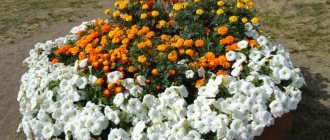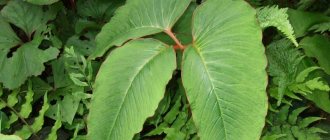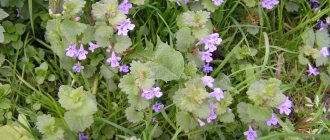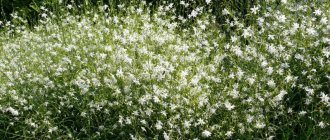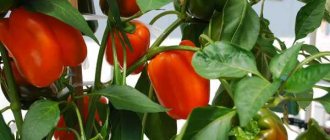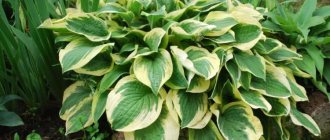Each owner of a country plot strives to make the territory as individual and beautiful as possible. At the same time, more and more new ideas are being selected to create areas of incredible beauty. By combining crops, you can choose not only bright and lush flowering plants, but also exquisite cereals or green spaces, which, despite their minimal colorfulness, look very unusual. Ornamental grass for the garden will be the best choice if desired, and complement the area with greenery, and without bothering with the arrangement of flowers. In this article we have selected several varieties of ornamental grasses and will consider their characteristics.
Drought-resistant perennial ornamental grasses
Drought tolerance is an important factor when choosing crops because they can complement any site, even those that receive a lot of UV rays. Prominent representatives of this group of herbs are some ornamental plants.
Feather grass (Stipa)
It is distinguished by incredible silky paniculate inflorescences that develop like waves and can sway under the influence of the wind.
Photos of Kovyl
Such crops go well with Gelahrysums, Xeranthemums, and Winged Ammobium. It is recommended to grow the plant from seeds, sowing directly into open soil. Does not require special watering.
Elymus arenarius
A perennial representative with long linear leaves in a bluish-blue hue.
Elimus sandy among the stones
This culture reaches up to 1 meter in length. Forms fairly dense rosettes that quickly develop into new territories. The main problem is limiting the growth of culture.
Fescue or as it is called "oatmeal"
A common ornamental grass for the garden, which is deservedly in demand among gardeners. The main advantage of the culture is its high level of frost resistance.
Photo of fescue
Its bushes can winter under large amounts of snow without losing their leaf color.
Pennisetum
It always has an elegant appearance and can reach a height of up to 150 centimeters. It does not withstand frosty winters well, so it is better to grow it as an annual.
In design it is excellently used as a component of mixborders to decorate rocky gardens.
Soddy meadow or Pike (Deschampsia cespitosa)
Not picky about the composition of the soil, it takes root well in different areas.
Photo by Lugovik Soddy
Forms a low green tussock with panicles that rise beautifully above the grass. Every year it is better to dig up such a crop and plant it, dividing it into 3-5 parts.
Such ornamental grasses in garden design will look great in the areas and harmoniously complement interesting compositions.
Medicinal properties of the plant
The terrestrial organs of elderberry are capable of exerting healing effects on the human body. The properties of this crop are almost identical to those possessed by the black elderberry species.
The main ones are:
- diaphoretic;
- diuretic;
- astringent;
- anti-inflammatory;
- expectorant;
- antiseptic;
- wound healing;
- tonic.
Remedies from flowers, when used correctly, can quickly lead to recovery from colds, ARVI, diseases of the upper respiratory tract, inflammation of the kidneys, and bladder. They are used to reduce the risk of developing problems with the heart and blood vessels, and the male reproductive system. Medicinal products are used externally to quickly heal wounds, boils, burns, and relieve joint pain. They are recommended to improve performance.
Learn how to use black elderberry flowers.
The beneficial properties of the berries can last for six months. Dried flowers, when properly stored, are suitable for making medicinal products for two to three years. The leaves are collected for medicinal purposes in June-July. They are dried naturally under a canopy. The berries are harvested in the fall, when they are fully ripe. They are dried in the oven or ground with sugar and stored in the refrigerator. The flowers are removed after full opening and dried in a well-ventilated, shaded place.
Which garden ornamental grass is suitable for planting near bodies of water?
If your site has a small pond or stream, it can also be supplemented with suitable crops. Sedge will fit into the territory in an original and harmonious way, but not wild, but varietal. The variegated type of ornamental grass with white stripes, which will organically complement the areas, looks especially beautiful.
Chinese Miscanthus (Miscanthus sinensis)
Another popular plant is characterized by its moisture-loving nature and its affinity for warmth.
Miscanthus Photos
The culture develops quite slowly; you can enjoy its beauty only closer to the 5th year of life. The main feature of the plant is its beautiful decorative leaves, which are decorated with transverse or longitudinal light stripes.
At the end of summer, the lower part loses its attractiveness. To hide the shortcomings, you can plant beautiful Hostas at the foot.
Cane
Reed will also look natural next to bodies of water. The culture looks good in natural and artificial reservoirs. White and golden stripes are visible on the green leaves. Snow-white water lilies look very beautiful on the shore.
Photo of Reeds in a garden pond
Reeds are also very decorative if you choose the right variety. For example, the following are popular:
- Lake Reed variety Schoenoplectus lacustris “Albescens” – the main difference is considered to be the beauty of its white-green color;
- Golden spears reeds have rich yellow stems that turn green in summer;
- The Miscanthus variety Zebrinus has dark green stems, often with horizontal light stripes.
You can even use crops that are planted directly in the water. For example, the Common Arrowhead is suitable for such purposes. It is planted to a depth of 40 centimeters and develops both in the shade and in the sun.
Biological description[edit | edit code]
Elderberry is a perennial herbaceous plant with an unpleasant odor. The height of an adult plant ranges from 50 to 150 cm[3].
The stem is straight. Leaves are up to 20 cm long, with a petiole that is 4-5 times shorter than the blade; consist of 9-11 pointed leaves with serrated edges. The lower lateral leaves have petioles, the upper leaves are sessile[3].
The inflorescence is apical, paniculate, on a long peduncle. The corolla is white, sometimes pinkish or reddish on the outside. The flowers have an almond scent. The fruits are black, shiny, about 4 mm long, with three or four ovoid seeds[3].
Flowering time is from May to July, fruiting time is from August to September[3].
Shade-tolerant ornamental grasses and grasses
Some crops will thrive in areas with little shade.
Spreading boron
It forms a fairly lush curtain up to 1 meter in height. It is distinguished by oblong leaves with a golden tint.
Bor Spreading
Inflorescences are greenish. Flowering begins in May and continues until June.
Hakonechloa major
It forms fairly dense thickets based on narrow linear leaves in yellowish-green shades.
Hakonechloa large in the rock garden
The culture tolerates shade well, but can also grow in the sun. Excellent for forming high borders next to paths.
Short-haired reed grass
It has erect stems on which silvery panicles are located. Height – up to 1.5 meters.
Photos of Veynik
Used in garden zoning, decorating background walls, creating mixborders.
It is also worth paying attention to the ovate haretail. Its main advantage is its spike-shaped inflorescences, which visually resemble a hare's tail. The height of the peduncles is up to 60 centimeters. The plant is not afraid of frost. Another advantage is the preparation of original dry bouquets from inflorescences.
Title[edit | edit code]
The specific name of a species is the Latin noun ebulum
, which was used to name this plant.
The literature also gives the following Russian names for this plant - dwarf elderberry, barn elderberry, buznik[5].
The synonymy of the species includes the following names[6]:
- Ebulum humile (Mill.) Garcke
- Sambucus herbacea Gilib. — Elderberry herbaceous, or Elderberry herbaceous
- Sambucus humilis Mill. — Elderberry
Tall ornamental grass for the garden: where and how to use
Tall crops serve as excellent background plants, next to which low-growing grasses are planted. This allows you to zone the territory and form a kind of fence around the perimeter of the territory. In most cases, these are crops that overwinter in the ground and are mowed in the spring. Tall herbaceous crops look great both as solitary plants and in compositions with garden flowers.
Acute-flowered reed grass is in great demand. A perennial that has silvery panicles. Reed Molinia is perfect for any flower garden. Narrow leaves “shoot” on bare stems, which adds to the showiness of the crop.
Tall Perlovnik also looks extremely elegant. It has thin stems, at the top of which inflorescences in the form of brushes are formed, the spikelets are directed downwards.
Spartina is also suitable for creating landscape flower beds. This culture develops quite quickly, is very resistant to cold, and is not afraid of autumn frosts.
Alternative names
The Latin name Sambucus, according to scientists, comes either from a Greek word that translates as “red paint” (since the plant has coloring properties), or from the name of the Iranian three-stringed musical instrument “sambucus”, made from elder wood.
Important! Unripe fruits, flowers and seeds of elderberry pose a threat to human health. They contain poisonous hydrocyanic acid.
Elderberry is popularly called the eye of the devil, maiden sambuca, trumpet tree, tree of fate, old lady, buchkan, squeaker, elderberry. The herbaceous species is also called stinking, dwarf, low-growing, barn, and elderberry.
Low-growing ornamental grass for the garden
Such herbs reach a height of up to 50 centimeters. They can also be called ground covers, since they spread beautifully over the surface of the soil. Such crops are indispensable guests when decorating alpine slides, creating rockeries, rocky gardens, and carpeted areas. Paths with decorative ground cover grass developing nearby look very harmonious.
Also, such crops can be planted between stones, which will add vibrancy to the area. The most popular representative of this series is Variegated Ryegrass.
Separately, we should tell you how decorative grass is selected for the lawn. The most popular representatives here are:
- Red fescue;
- Sheep fescue;
- Perennial and Annual Ryegrass;
- Giant bentgrass;
- Meadow Bluegrass;
- Tawnless Rump.
The advantages of the crops are their exquisite appearance, ease of care, and the ability to combine with other floristic representatives.
Recipes
From elderberry, you can prepare various folk remedies that help with many diseases: decoctions, infusions, syrups. They are recommended for both internal and external use. Flowers, leaves and berries are used to prepare the products. Most often, herbal decoctions and infusions are used to speed up recovery from respiratory diseases.
For the flu
A person with the flu is always advised to drink plenty of warm fluids. An elderberry drink will help you quickly cope with the disease.
Rules for caring for ornamental grasses
Herbaceous plants are usually easy to care for. They do not require special fertilizers; it is enough to simply provide the crops with timely watering (with the exception of those species that love water, because they will need plenty of moisture). Due to excessive fertilizing, the plantings will begin to grow, lose shape and fall apart. Some types of herbaceous plants are quite aggressive crops. If their natural reproduction is not controlled, this can lead to their growth over large areas of your site. Remember this.
Perennial grasses are best propagated by root division. It is recommended to carry out the operation in spring or summer, even before the flowering period begins.
The main rules of care concern maintaining the flower garden in a decorative form. In late autumn or spring, be sure to remove any stems that have dried out and remove old leaves using a fan rake. During the growing season, inflorescences that have dried out are removed. This must be done to maintain the decorativeness of crops.
Peculiarities
Elderberry (Sambucus ebulus) is an unusual plant for its genus. It is a dwarf perennial with herbaceous rather than shrubby or tree-like shoots. The low-growing, stinking variety, even in its description, has significant differences from other plant subtypes. The herbal elderberry grows no more than 1.5 m and has an elegant, carved foliage pattern. The openwork and lush growth quickly increases its mass during the flowering period; green shoots are complemented by white umbrellas of inflorescences from May to June.
Elderberry is a cold-resistant plant; it can withstand light frosts down to -4 degrees ; in winter it does not die without shelter when atmospheric temperatures drop to -29 degrees. In other cases, grassy shoots are cut off at the root and carefully covered; you can cover them with sand with the addition of ash.
A serious problem with uncontrolled reproduction is the active growth of the rhizome of stinking elderberry. It really quickly increases the mass of greenery, spreading across the surrounding area. It is recommended to take this into account when planting, if necessary, digging in barrier screens or choosing a place where such a feature will not be a hindrance. It is also important to remember that all parts of the plant are poisonous, especially unripe fruits. When ripe, they are safe and can be eaten, just like other elderberry species.
Rules for harvesting elderberry
Collection season
The berries are picked at the moment of full ripening - in September. Roots - in autumn or spring. The flowers are collected at the moment of full opening. The grass is cut in June, the weather should be clear.
Harvesting and drying
The roots are dug up, cleaned of soil residues, cut into pieces (10 cm), and split. The pieces are dried in the open sun for several days, after which they are finished indoors with good ventilation. Flowers, fruits, and grass are initially dried under a canopy. The inflorescences are then threshed to separate the branches. For fruits, it is allowed to use a dryer at +30-35 degrees.
Storage rules
The root dries out greatly, and 20% of the finished raw material is obtained. It is stored, like other parts, in a dry, ventilated place.
Growing Armeria seedlings
This planting method is especially suitable for the seaside variety: The seeds are soaked in a nutrient solution for several hours before planting. About a week before the procedure, the earth is crushed and organic matter is added. Planting is done in peat pots. Planted sparsely, the seeds have good germination. When two leaves appear, the sprouts are planted. Watering should not be abundant, but moisture should be present constantly. Before planting, it is recommended to take the pots out to the balcony, loggia, or yard during the day; this way the sprouts will harden. Planting in open ground is carried out at the end of May, preferably in sunny areas; it is better not to plant flowers near fences
Voronets in landscape design
Voronets will look good in shady areas in combination with ferns and other shade-loving forest flora. The result can be an interesting composition reminiscent of a real forest. In addition, Voronets can be supplemented with plants such as bergenia and buzulnik.
Red-fruited and racemose crows are recommended to be planted away from house windows and garden paths. You can also decorate the banks of streams, ponds and other bodies of water with these attractive-looking bushes. Moreover, their plantings are usually made large and numerous enough to create a large-scale background.
In addition to this, some people use the red-fruited crow to form hedges.
Withania sleeping pills
affected by Alternaria, spider mites
axillary, small, green
leaves alternate, entire, softly pubescent
small orange-red berries
an erect plant with branched tomentose stems
alkaloids (anaferin, anahydrin, nicotine, tropine and withasomnine), steroidal lactones, so-called withanoids (somniferanolide, somnivitanolide, withaferin A and withasomniferanolide), free amino acids (glycine, cystine, alanine, tryptophan)
nervous and physical exhaustion, nervousness, insomnia, tuberculosis, osteoarthritis, respiratory diseases, bronchitis, bronchial asthma, Alzheimer's disease, drug addiction, arthritis
Popular varieties of astrantia
- Astrantia 'Abbey Road' is a variety with large reddish-purple inflorescences with dark purple involucres. Height 45-60 cm. Blooms from mid to late summer. Prefers semi-shaded places, but can also grow in sunny places, provided they are sufficiently moist. The plant is bright, juicy, expressive, a godsend for shady corners of the garden.
- Astrantia 'Buckland' is a variety with soft pink inflorescences against a background of silver-green wrappers. Blooms from June to September. Plant height 65-70 cm. Grows in sun and partial shade.
- Astrantia 'Claret' is a variety with wine-red inflorescences with transparent wrappers of the same color. Height is about 50-55 cm. It blooms for a very long time, from June to the end of September. Looks very nice in large groups under trees. Prefers semi-shaded and shady places. Can be grown as a container crop.
- Astrantia 'Hadspen Blood' is a powerful, tall variety (75-80 cm), blood-red inflorescences. It has a very long flowering period - from late spring to late summer. Prefers light shade.
- Astrantia 'Lars' is a variety with dark red inflorescences with lighter involucres. Blooms from June to late September. Prefers light shade. Height 55-70 cm.
- Astrantia 'Moulin Rouge' is a variety with inflorescences of a unique dark wine-red tone, the wrapper is even darker, almost black. Blooms from early to late summer. It can grow both in open sunny places and in partial shade. In the shade, the color of the flowers becomes weaker.
- Astrantia 'Ruby Wedding' is a variety with dark red inflorescences. They bloom in early summer, flowering lasts until early autumn. Height 55-65 cm. Prefers moderate shade.
Choosing a location and preparing the soil for planting armeria
This plant loves bright light, so it is advisable to plant armeria in illuminated areas so that the plant grows healthy and strong. The exception is turfy armeria; it can burn out under direct, burning rays. It is correct to place this variety on eastern or western slopes, or in the light lacy shade of trees. Armeria needs light, well-drained, acidic soils. It is suitable for rocky, sandy soils, which are filled with a standard dose of mineral fertilizers before planting. To improve the moisture holding capacity of sandstones, peat is added during digging, which will also help acidify the alkaline soil. Loams can be corrected by adding sand and perlite. On wet soils, the flower is planted on artificial embankments. An additional layer of expanded clay is added to the bottom of the planting holes for drainage. It is important to properly prepare the soil for the plant, because armeria will grow in one place for 5–6 years.
general description
The plant belongs to the large Aspleniaceae family and can be either an epiphytic or terrestrial fern, in most species adapted for growing at home.
There are 11 wild varieties of crops found in our country. The shape of the leaves forming a rosette can vary greatly depending on the species; the plates can be entire, pinnately dissected, with partially wavy edges, as well as elongated xiphoid or triangular. Spores traditionally form on the lower part of the leaf. The rhizome is covered with soft small scales, short vertical or creeping in appearance. As it grows, the bush spreads outwards due to the constant growth of leaves from the center of the rosette.
This fern reacts extremely painfully to touching its leaves, so when caring for asplenium, it is recommended to touch it as little as possible.
How to plant astrantia seedlings
Astrantia can reproduce by self-sowing, but there is a possibility of loss of varietal characteristics, as people say: transfer. Therefore, it is advisable to control this process. Note that seeds of varietal plants will not necessarily retain all varietal characteristics, but will also be interesting. You can sow starwort before winter and thin out the seedlings in the spring. True, in this case, we are not immune from any vagaries of nature; in the event of late frosts, we may be left without flowers.
This means that it is better to grow seedlings, especially since no special knowledge or skills are needed.
- The seeds need to be stratified (put astrantia seeds in the vegetable drawer of the refrigerator for the winter), and in March sow them in light soil, shallow.
- Water, maintain a temperature of about 22˚ C, keep under a transparent cover until the first shoots appear.
- Then place it in a very bright place, moisten the substrate, after a couple of leaves appear, the seedlings need to be thinned out.
- After a couple of weeks, we plant the seedlings in separate pots, make sure that there are no persistent drafts, and begin hardening them two weeks before planting in the ground.
- As soon as we can leave the seedlings at the hardening site for a day, they are ready for planting.
Danger of the Crow
From the above, it is obvious that the Voronets are not too demanding when it comes to caring for them. However, this plant contains great danger. It is poisonous and toxic, so when you plant it on your site, make sure that small children do not try it. Even a couple of eaten fruits can cause serious poisoning.
Of course, many types of Voronets are used in folk medicine in one way or another. Extracts of the roots and rhizomes of the racemosa are added to dietary supplements recommended for women suffering from menopause, premenstrual syndrome and other similar sexual problems. But, of course, you should not use Voronets yourself to treat anything. And the main reason here is still the same - these plants are very poisonous.
Insectivorous plants for a summer house or swamp in a garden plot
Introduction
Many consider creating imitations of natural landscapes to be one of the most interesting activities for a gardener. Much has been written about alpine hills, about forest ponds with coastal flooded zones, about lawns (a lawn can be considered as a model of a pasture, where the role of a herd of herbivores is usually played by a lawn mower). Recently, mixborders made from meadow grasses, imitating wild field herbs, have become fashionable in the West. You can try to design the site not in a natural, but in an artificial way: why not imitate a village heap, a station park or a collective farm orchard. It all depends only on the preferences and desires of the gardener. But today we will talk about the model of a raised bog, in our opinion, one of the simplest, most accessible and interesting mini-landscapes, which, unfortunately, is extremely rare in our garden plots.
Vegetative propagation of astrantia
It can take place in two ways: dividing the mother bush and through small sections of the rhizome. In the first case, the timing is spring and autumn, and in the second, only until the plant awakens and begins to grow. In specialized stores, they most often sell rhizomes of various varieties. Astrantia, which requires a little time to plant and care for, reproduces well this way and has a high survival rate. The only point worth paying attention to is the root system. Before purchasing a plant, carefully inspect the rhizome if it is exposed. If astrantia is in a container, then look at the leaves, they should be bright, with normal turgor, without signs of damage. When purchasing rhizomes in the spring, you can plant them immediately in the ground; if it is winter outside, then use small containers with light and nutritious soil.
Composition of elderberry
The medicinal properties of elderberry are largely due to the presence of poison - the toxic alkaloid amygdalin, which, after splitting, produces hydrocyanic acid, as well as an equally poisonous cyanogenic glycoside.
Also found in all parts of the plant:
- Bitterness
- Coloring pigments
- Tannins
- Pectins
- Essential oils
- Sahara
- Alkaloids
- Glycosides
The organic acids in the plant include acetic, valeric, caffeic, tartaric, malic acids; the berries and leaves contain the terpene and sambucin. Berries also contain a lot of carotene, choline, vitamin C, and rutin.
